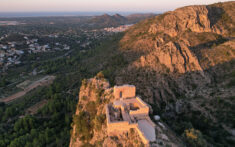It's on Doctor Fleming Avenue. It is the only bullring in the entire Marina Alta. It opened in 1901, was torn down during the Civil War, and rebuilt and reopened in 1957. It has some arabesque-style elements and a masonry and mortar structure. The name given to this bullring is "La Joya Levantina".
25 March 2021 - 10: 52










